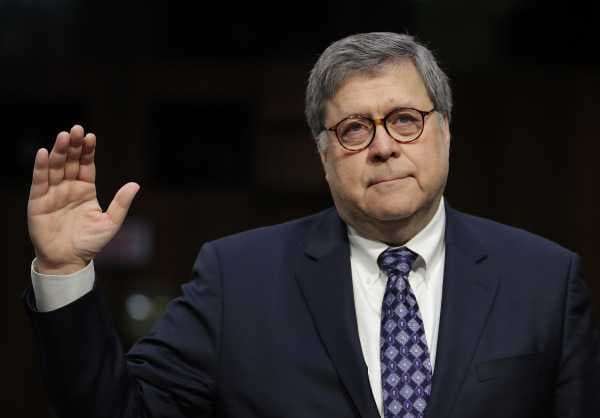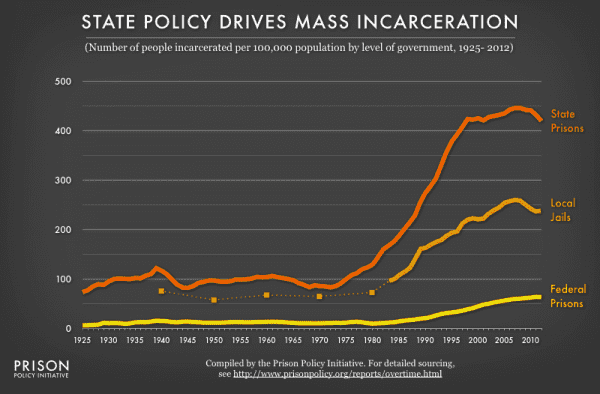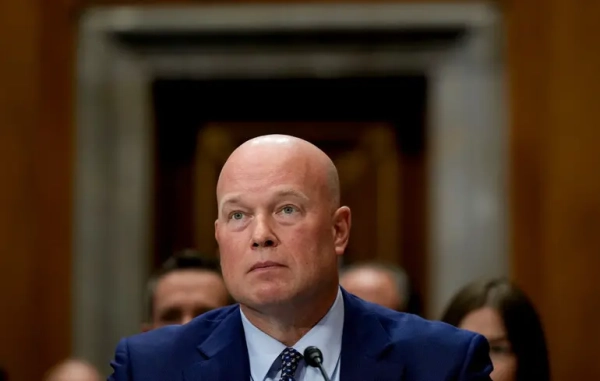
William Barr will face questions from senators at confirmation hearings on Tuesday, a crucial step before he’s confirmed as President Donald Trump’s attorney general.
Barr, who previously held the position under President George H.W. Bush, would become head of the US Department of Justice if senators confirm him. He’d replace acting Attorney General Matthew Whitaker, who’s in office after Attorney General Jeff Sessions resigned last year.
For now, a lot of the attention around Barr has focused on what his nomination could mean for the Russia investigation.
Join the Vox Video Lab
Go behind the scenes. Chat with creators. Support Vox video. Become a member of the Vox Video Lab on YouTube today. (Heads up: You might be asked to sign in to Google first.)
But as head of the US Department of Justice, Barr would also have a lot of control over the federal criminal justice system more broadly. And although criminal justice reform has gained momentum in recent years (leading to the passage of the federal First Step Act, with Trump’s support), Barr’s views have historically been on the opposite end of the spectrum — supportive of mass incarceration and other “tough on crime” policies.
Ames Grawert, senior counsel at the Brennan Center, which supports criminal justice reform, tweeted in reaction to Barr’s nomination last year: “Barr is one of the few people left in policy circles who could reasonably be called as bad as, or worse than, Jeff Sessions on criminal justice reform.” And make no mistake: Sessions had a very bad record on criminal justice reform.
In fact, Barr praised Sessions’s record at the Justice Department, including some of his work dismantling criminal justice reform efforts by President Barack Obama’s administration.
In short: If you were hoping that Sessions’s replacement would be better on criminal justice reform, Barr’s nomination should be of great concern.
Bill Barr’s punitive record on criminal justice issues
Barr doesn’t just have a record of supporting the war on drugs and mass incarceration. As attorney general for George H.W. Bush, he was one of the architects for federal policies that supported both.
Here are some examples, noted in part by Grawert and civil rights lawyer Sasha Samberg-Champion:
- As deputy attorney general from 1990 to 1991 and attorney general from 1991 to 1993, Barr pushed for and helped implement more punitive criminal justice policies, including a 1990 crime law that, among other things, escalated the war on drugs.
- In 1992, Barr signed off on a report by the Department of Justice titled The Case for More Incarceration. In a letter of support, he argued that “there is no better way to reduce crime than to identify, target, and incapacitate those hardened criminals who commit staggering numbers of violent crimes whenever they are on the streets.” He also called on the country to build more jails and prisons. (Although he specified violent criminals, the federal system, unlike the much larger state systems, locks up mostly drug offenders.)
- In 1992, asked about racial disparities in prisons by Los Angeles Times reporter Ronald Ostrow, Barr argued that “our system is fair and does not treat people differently.” He went on to defend laws that made prison sentences for crack cocaine much harsher than prison sentences for powder cocaine. The disparity between the two was reduced by the Fair Sentencing Act of 2010, in part because there’s little justification for it based on the drugs’ effects, but the higher sentence for crack has a disproportionate racial impact since crack was more commonly used in black communities and powder cocaine was more commonly used in white communities.
- In 1994, Barr co-chaired a commission for Virginia’s governor that released a plan to abolish parole (which allows certain inmates to go free before the completion of their sentences) in the state, increase prison sentences, and build more prisons.
- Barr also once said that it was “simply a myth” that there were “sympathetic people” and “hapless victims of the criminal justice system” in prisons, according to David Krajicek at Salon.
It’s possible that Barr’s views have evolved over the years, just as many people’s views have toward the drug war and mass incarceration, especially as crime has plummeted in the past two decades. This may even apply to Trump, who ran on a “tough on crime” platform in 2016 but went on to sign the biggest federal criminal justice reform bill in decades, the First Step Act, after the urging of his son-in-law and adviser Jared Kushner.
But Barr has continued advocating for “tough on crime” views, at least until recently. In 2015, he signed a letter with other former law enforcement officials to oppose a federal sentencing reform bill, according to Michael Balsamo at the Associated Press.
In November, Barr and two other former attorneys general wrote an op-ed for the Washington Post in which they defended Sessions’s “tough on crime” record. They criticized the Obama administration for investigating police abuses and discouraging more aggressive policing practices. They also praised Sessions for his memo encouraging federal prosecutors to pursue harsher prison sentences against drug offenders.
In his opening remarks at the Senate confirmation hearings, Barr vowed to “diligently implement” the First Step Act but also affirmed his commitment to “keep up the pressure on chronic, violent criminals.” And he later argued at the hearings that the 1980s and ’90s were a different time, when crime was much higher and prison sentences much shorter, so his call for more punitive punishments was warranted.
The research doesn’t support mass incarceration
Barr’s support for more punitive criminal justice policies goes against the research, which has found that more incarceration and longer prison sentences do little to combat crime.
A 2015 review of the research by the Brennan Center for Justice estimated that more incarceration — and its abilities to incapacitate or deter criminals — explained about 0 to 7 percent of the crime drop since the 1990s, though other researchers estimate it drove 10 to 25 percent of the crime drop since the ’90s.
Another huge review of the research, released last year by David Roodman of the Open Philanthropy Project, found that releasing people from prison earlier doesn’t lead to more crime, and that holding people in prison longer may actually increase crime.
That conclusion matches what other researchers have found in this area. As the National Institute of Justice concluded in 2016, “Research has found evidence that prison can exacerbate, not reduce, recidivism. Prisons themselves may be schools for learning to commit crimes.”
This is the kind of research that has driven support for criminal justice reform over the years, including the First Step Act. But it also suggests that much of Barr’s initial work on criminal justice issues, particularly his support for mass incarceration, was misguided. It remains unclear if and how that has changed Barr’s mind.
The silver lining: the federal criminal justice system isn’t that big
If there is any sign of optimism for criminal justice reformers here, it’s that the federal criminal justice system is a relatively small part of the national criminal justice system.
Consider the numbers: According to the US Bureau of Justice Statistics, 87 percent of US prison inmates are held in state facilities (and most state inmates are in for violent, not drug, crimes). That doesn’t even account for local jails, where hundreds of thousands of people are held on a typical day in America. Just look at this chart from the Prison Policy Initiative, which shows both local jails and state prisons far outpacing the number of people incarcerated in federal prisons:

One way to think about this is what would happen if Trump used his pardon powers to their maximum potential — meaning he pardoned every single person in federal prison right now. That would push down America’s overall incarcerated population from about 2.1 million to about 1.9 million.
That would be a hefty reduction. But it also wouldn’t undo mass incarceration, as the US would still lead all but one country in incarceration: With an incarceration rate of around 593 per 100,000 people, only the small nation of El Salvador would come out ahead — and America would still dwarf the incarceration rates of other developed nations like Canada (114 per 100,000), Germany (76 per 100,000), and Japan (41 per 100,000).
Similarly, almost all police work is done at the local and state level. There are about 18,000 law enforcement agencies in America, only a dozen or so of which are federal agencies.
While the federal government can incentivize states to adopt specific criminal justice policies, studies show that previous efforts, such as the 1994 federal crime law, had little to no impact. By and large, it seems local municipalities and states will only embrace federal incentives on criminal justice issues if they actually want to adopt the policies being encouraged.
Criminal justice reform, then, is going to fall largely to municipalities and states. To this end, many local and state governments are actually way ahead of the federal government when it comes to criminal justice reform, enacting changes like reduced prison sentences across the board, the defelonization of drug offenses, and marijuana legalization in recent years.
So Barr may represent another grim few years for criminal justice reformers at the federal level. But they’ll still have plenty of opportunities in cities, counties, and states, which hold way more sway in the overall justice system.
Sourse: vox.com






